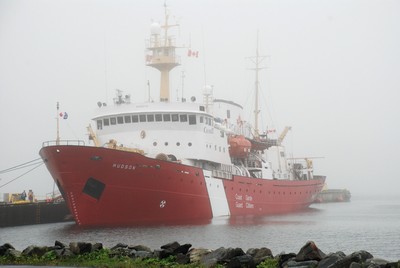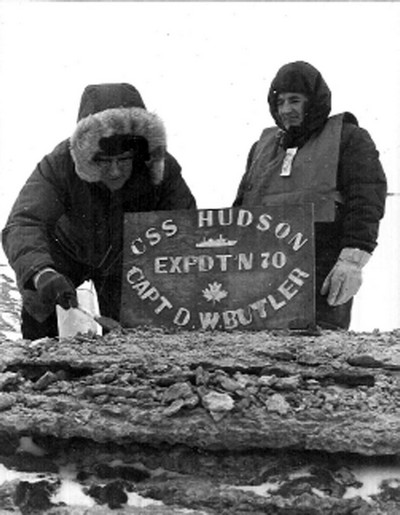In 1971, the Canadian Scientific Ship (CSS) Hudson completed the first circumnavigation of North and South America, and was the sixth ship to ever navigate the Northwest Passage. Many of the scientists on this cruise joined the Geological Survey of Canada when it established the Atlantic Geoscience Centre in 1972 at the Bedford Institute of Oceanography in Dartmouth, Nova Scotia.
The voyage established Canada’s credentials as a nation seriously concerned with the oceanography and marine geoscience of the world’s oceans. The discovery of submerged pingo-like features on the Beaufort Shelf initiated decades of Survey studies into geohazards that could affect petroleum exploration.
The voyage used state of the art scientific instrumentation, including a gravimeter, towed magnetometer, and precision echo sounder, which together with seismic profiling were to become the basis of the 1970s multiparameter surveys conducted by the Survey and the Canadian Hydrographic Service off Canada’s east and west coasts.
This work laid the foundation for understanding the complex structure of the continental margin and for Canada’s recent claim to extended continental shelf jurisdiction in the Atlantic Ocean. The Hudson still works in the stormy North Atlantic making it one of the world’s oldest active research vessels.
Category: Exploration
Decade: 1970s
Reference
Wadhams, P., 2014. The ‘Hudson-70’ Voyage of Discovery: first circumnavigation of the Americas; in Voyage of Discovery: Fifty Years of Marine Research at Canada’s Bedford Institute of Oceanography, (ed.) D.N. Nettleship, D.C. Gordon, C.F.M. Lewis, and M.P. Latremouille; Bedford Institute of Oceanography-Oceans Association, Dartmouth, Nova Scotia, p. 21–28.



